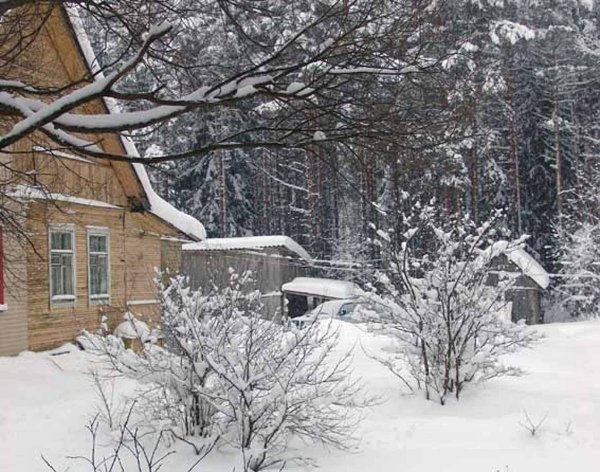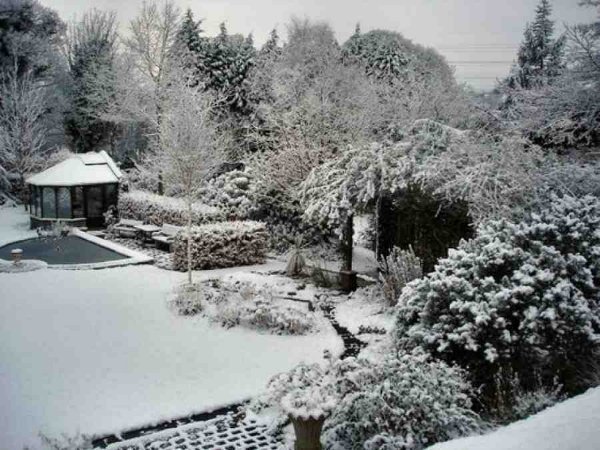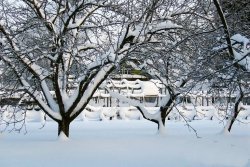Garden work in February
February is the snowiest month. In February, frost often gives way to a blizzard and a subsequent thaw. Strong frosts are usually maintained in the first half of the month, and the danger of freezing fruit trees is still there. Severe frosts can destroy fruit buds, like apple, cherry, plum and pear. Therefore, in February, trees should be continued to be covered with snow. Such hilling can be 1.5-2 meters.
In February, the fight against mice and rabbits continues. You should continue checking the integrity of the binding on the trees. If you notice traces of mouse stay on the tree trunk, then additional measures should be taken to destroy them: mousetraps, poisoned baits. Check whether damage to mouse trees is harmful, it is very simple: you need to dig out the snow from one side of the stem and conduct an inspection. Then you should return the snow to the place and trample it.

In February, you should continue to remove winter pests from pests, if this has not been done before. Sockets are removed and destroyed.
Where the planting material for spring planting is stored, it is necessary to regularly cleanse the snow from the circular ditch, which is used to protect seedlings from mice.
The apples and pears stored for winter storage are moved to remove decaying fruits.

In the basement, cuttings prepared from fall for inoculation are checked. If the sand in which the cuttings are stored is dried, then it should be moistened. If your basement is not suitable for storing cuttings because of the impossibility of adjusting the temperature, it is better to store them under the snow. In late February, you can prepare cuttings for the spring inoculation.
It is necessary to continue collecting bird litter, peat, ash, etc. Work is continuing on repairing garden tools or a new one is being purchased.






